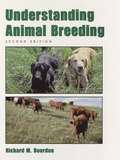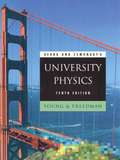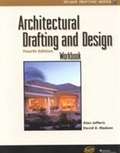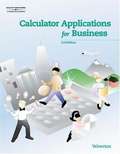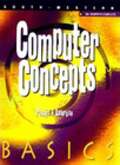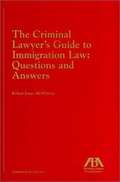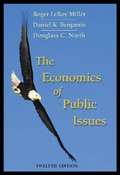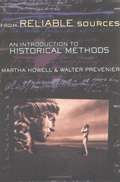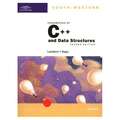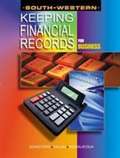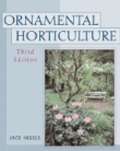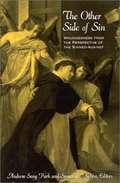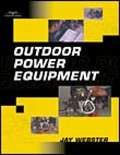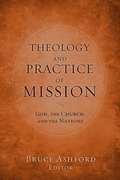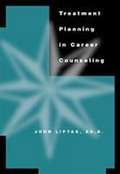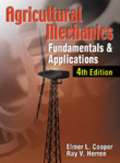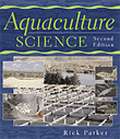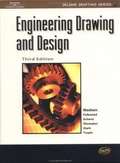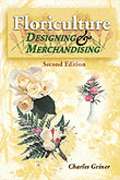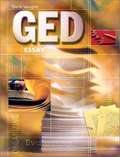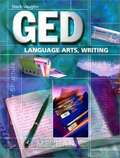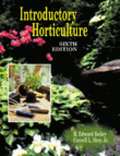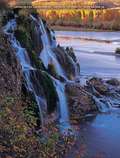- Table View
- List View
Understanding Animal Breeding (Second Edition)
by Richard M. BourdonAn experienced animal breeder, Rick Bourdon designed this book to be a modern, technologically up-to-date approach to animal breeding. Understanding Animal Breeding addresses the abstract concepts of animal breeding, presenting the necessary mathematics, but previous experience in genetics and statistics is not assumed. Well organized and readable, the book stresses application, then explains theory for an overall understanding of the material. Coverage explores the latest material on interactions and breeding objectives; performance testing; probabilities and inheritance; the Hardy-Weinberg equilibrium with multiple alleles; realized response to selection; breeding for uniformity; and biotechnology. For practicing animal breeders as well as those interested in breeding and agriculture.
University Physics (Tenth Edition)
by Young Roger A. Freedman T. R. Sandin A. Lewis FordNow in its commemorative Tenth Edition, this book remains a classic. Adhering to the highest standards of integrity and incorporating some of the findings of current research in physics, it enables readers to develop physical intuition and build strong problem-solving skills. It also points out conceptual and computational pitfalls that commonly plague beginning physics students and provides them with explicit strategies for analyzing physical situations and solving problems.
Architectural Drafting and Design Workbook (4th Edition)
by Alan Jefferis David A. MadsenThis stellar new edition details step-by-step methods for the design and layout of each type of drawing required for a complete set of architectural plans. This comprehensive handbook also contains a copy of the AutoCAD 2000 direct-to-student software and dwg files of selected plans in the book, supplemented by expanded coverage of CADD and freehand sketching techniques. Readers are challenged to think through and solve numerous design problems while adhering to the latest Universal Building Code, CABO and SBCCI codes; meeting requirements of the Americans with Disabilities Act; taking into account the latest NDS wood design standards; and considering the growing popularity of engineered lumber and steel construction.
Calculator Applications for Business (3rd edition)
by Sandra YelvertonCALCULATOR APPLICATIONS FOR BUSINESS provides students realistic experience with business applications typically performed on electronic calculators or other office machine keypads. Students learn to manage their time, become familiar with business forms, develop accuracy in machine operation, expand and refine math skills, and explore career opportunities.
Computer Concepts Basics
by Delores Pusins Ann AmbroseOffering a basic introduction to computers, this text covers computer hardware, software, input, applications skills, the Internet and Web page creation, careers, computer ethics and more. Step-by-step instructions along with numerous screen shots and illustrations help readers learn and master essential computer concepts and skills.
The Criminal Lawyer's Guide to Immigration Law: Questions and Answers
by Robert James McwhirterSet up in a unique question and answer format, this concise guide focuses on the criminal lawyer's most common questions about immigration law and representing noncitizens.
The Economics of Public Issues
by Roger Leroy Miller Daniel K. Benjamin Douglass C. NorthFor years, The Economics of Public Issues has shown students the power of economics in explaining the world around us. the twelfth edition continues the tradition of illustrating traditional economic principles through contemporary issues by offering eight all-new chapters on compelling topics such as the economics of traffic jams, slave redemption in Sudan, and the Microsoft monopoly. the authors' clear presentation and straightforward applications make the study of economics entertaining and informative. The Economics of Public Issues is an essential source of engaging, relevant readings for a principles of economics course, and an excellent way to spark independent thinking in political economy, public policy, and social issues courses.
From Reliable Sources: An Introduction to Historical Methods
by Martha C. Howell Walter PrevenierFrom Reliable Sources is a lively introduction to historical methodology, an overview of the techniques historians must master in order to reconstruct the past. Its focus on the basics of source criticism, rather than on how to find references or on the process of writing, makes it an invaluable guide for all students of history and for anyone who must extract meaning from written and unwritten sources. Martha Howell and Walter Prevenier explore the methods employed by historians to establish the reliability of materials; how they choose, authenticate, decode, compare, and, finally, interpret those sources. Illustrating their discussion with examples from the distant past as well as more contemporary events, they pay particular attention to recent information media, such as television, film, and videotape. The authors do not subscribe to the positivist belief that the historian can attain objective and total knowledge of the past. Instead, they argue that each generation of historians develops its own perspective, and that our understanding of the past is constantly reshaped by the historian and the world he or she inhabits. A substantially revised and updated edition of Prevenier's Uit goede bron, originally published in Belgium and now in its seventh edition, From Reliable Sources also provides a survey of western historiography and an extensive research bibliography.
Fundamentals of C++ and Data Structures, Advanced Course (2nd Edition)
by Kenneth Lambert Thomas NapsFollowing the success of Fundamentals of Program Design and Data Structures by Lambert and Naps, C++ Advanced Course is essential for a second course in Computer Science. Completely updated, this text provides in-depth coverage to help students prepare for the AP exam, Exam AB. A full introduction to the essential features of C++ is provided and programming techniques are emphasized in the context of interesting and realistic case problems. This text is compatible with C++ compilers from Microsoft, Borland, and Metrowerks.
Keeping Financial Records For Business
by Robert A. Schultheis Carol Sturzenberger Burton S. Kaliski Daniel H. Passalacqua Nancy LongKeeping Financial Records for Business 9E will give your students a broad knowledge of business operations and the basic skills they need to keep better financial records. The text contains a colorful graphic design and features that will capture students? interest, such as multicultural insights and interviews with individuals who use record keeping in their daily lives. A step-by-step approach to each new task makes it easier for students to master the job skills of record keeping.
Ornamental Horticulture: Science, Operations, and Management (3rd edition)
by Jack E. IngelsThis comprehensive text introduces students to both the art and science of ornamental horticulture. The book includes equal coverage of such diverse topics as science, crop production, craftsmanship, and business management skills. From this balanced perspective, the student gains an appreciation for the value of the diverse segments of ornamental horticulture. In addition, the text offers students a realistic view of the business skills required to be successful in ornamental horticulture. Such pedagogical features as extensive illustrations, objectives, and review questions help students monitor their progress. This unique text gives students a well-rounded view of both the art and science of ornamental horticulture to prepare them for careers in this exciting industry.
The Other Side of Sin: Woundedness from the Perspective of the Sinned-against
by Andrew Sung Park Susan L. NelsonIn these nine essays, Christian theologians, Biblical scholars, and clergy consider the experience of sin from the perspective of those who have been its victims. They discuss human participation in evil, and the possibility of forgiveness and reconciliation. Alienation, shame, the teaching of justice and reconciliation, and hospitality to victims are emphasized. Old Testament, Asiatic, historical, feminist, activist, ethical, and educational perspectives are all considered. c. Book News Inc.
Outdoor Power Equipment
by Jay WebsterDesigned to assist students in developing the skills required of professionally certified outdoor power equipment technicians, this book features operation, troubleshooting and service information that can be used to maintain and repair commonly used outdoor equipment, including: lawnmowers and garden tractors, snow throwers, leaf blowers and string trimmers, chain saws, and more! Comprehensive in scope, Small Engines for Outdoor Power Equipment begins by acquainting students with shop safety, tools and basic service information. Following exposure to 'the big picture' of small engine operation, students are then introduced to the specifics of the ignition system, fuel system, governor and throttle control system, lubrication system, cooling and exhaust system, manual starting system, and the electrical starting and charging system. Both two-stroke and four-stroke engines are covered in detail. Small Engines for Outdoor Power Equipment also features step-by-step photo sequences to illustrate service techniques and provides students with an opportunity to 'test' their knowledge by conducting a failure analysis and successfully rebuilding a failed engine.
Theology and Practice of Mission: God, the Church, and the Nations
by Bruce Ashford David NelsonTheology disconnected from mission is not Christian theology at all. The pastors, professors, and missionaries writing Theology and Practice of Mission provide a clear biblical-theological framework for understanding the church's mission to the nations. Toward that goal, the book holds three major sections: God's mission, the church's mission, and the church's mission to the nations. Part one explores the canon of Christian Scripture from narrative and systematic angles, explaining how the mission of God-to redeem a people who will be a kingdom of priests to the praise of his glory, bear witness to his gospel, advance his church, and dwell with him forever on a new heaven and earth-is communicated in the Bible's four movements: Creation, Fall, Redemption, and Restoration. Part two sees the mission of God's people in the light of God's mission, emphasizing not only preaching and church planting but also gospel witness in every dimension of human culture-glorifying God in family, church, work, community, through the arts, sciences, education, business, and the public square. The writers encourage us to live missionally, leaving all of our resources at God's disposal for the sake of his kingdom. Finally, part three contends that the North American church must come to terms with its missional calling-just as international missionaries do-and gives a starting point and parameters for conceiving the church's mission to all people groups and cultural contexts. Chapters here include ones on unreached people groups, Muslims, Hindus, Buddhists, and Postmoderns.
Treatment Planning in Career Counseling
by John J. LiptakThis process-oriented, how-to, and clinically oriented text is the book that the market has been waiting for. Ideal for both beginning and experienced career counselors, the text reviews the most influential career development theories and illustrates how to use them in developing treatment plans. The author provides a practical focus on how to most effectively and competently use these theories in practice, leaving the comprehensive overview and in-depth discussion of theories for other career counseling texts.
Agricultural Mechanics: Fundamentals and Applications (4th Edition)
by Ray V. Herren Elmer L. CooperA text for students learning basic mechanical skills in high school and post-secondary programs in agriscience, production agriculture, agribusiness, ornamental horticulture, and agricultural mechanics. Treatment begins with information on careers, then provides instruction on basic mechanical skills and applications. Covers use of hand tools, power tools, and stationary power equipment with numerous materials, touching on processes of wood- and metalworking, electric and gas welding, electrical wiring, robotics, plumbing, and construction. Includes color photos of male and female students, and 54 project plans. This fourth edition is revised to reflect the latest developments in the field.
Aquaculture Science
by Rick ParkerThis comprehensive text introduces students to the aquaculture industry. It covers every aspect of aquaculture, including history, potential, descriptions, management, feeding, marketing, and diseases of aquatic animals and plants. Also addressed are the water requirements and chemistry necessary for successful aquaculture. The book offers detailed information on employment opportunities in the aquaculture industry. The science of aquaculture is stressed throughout to ensure that students understand the fundamental principles. The text includes numerous pedagogical features to ensure students' success.
Engineering Drawing And Design (3rd edition)
by David A. MadsenReflecting the National Standards Institute and American Society of Mechanical Engineers guidelines, this textbook focuses on the development of skills like sketching, descriptive geometry, dimensioning, and pictorial drawing, and then applies them to discussions of manufacturing materials and processes. All the engineering disciplines are covered, including welding, fluid power, piping, electricity and electronics, HVAC, and sheet metal. Methods and principles for preparing technically precise engineering drawings are featured throughout.
Experimental Design and Data Analysis for Biologists
by Gerry P. QuinnAn essential textbook for any student or researcher in biology needing to design experiments, sample programs or analyse the resulting data. The text begins with a revision of estimation and hypothesis testing methods, covering both classical and Bayesian philosophies, before advancing to the analysis of linear and generalized linear models. Topics covered include linear and logistic regression, simple and complex ANOVA models (for factorial, nested, block, split-plot and repeated measures and covariance designs), and log-linear models. Multivariate techniques, including classification and ordination, are then introduced. Special emphasis is placed on checking assumptions, exploratory data analysis and presentation of results. The main analyses are illustrated with many examples from published papers and there is an extensive reference list to both the statistical and biological literature. The book is supported by a web-site that provides all data sets, questions for each chapter and links to software.
Floriculture Designing & Merchandising (2nd Edition)
by Charles P. GrinerProvides an introduction to the floral industry, along with basic instructions in the techniques of floral design and merchandising. Coverage is at a high school level, using large type and numerous, sometimes fuzzy b&w illustrations of arrangements. Topics range from careers in the retail flower business, design principles, and flower and plant selection and storage, to arrangements for holidays and weddings, pricing strategies, displays, delivery, and professional organizations. Annotation C. Book News, Inc., Portland, OR (booknews.com).
GED: Essay
by Steck-VaughnThe only GED preparation program based on results of the current GED Tests! The new Steck-Vaughn GED is a result of thorough research and analysis based on examining results from the latest GED Tests. It has more practice tests, more exercise pages, and expanded lessons. Each of the six books(one for every GED testing area) teaches the knowledge, skills, and confidence a GED candidate needs for test-day success -- and the results are guaranteed! A simple, self-contained guide to essay writing -- Part II of the GED Writing Skills Test. Steck-Vaughn's unique POWER points (Plan, Organize, Write, Evaluate, Revise) are provided as an effective tool for producing good essays. Sections on "Content" and "Scoring" and suggestions on liming help learners plan test-taking strategies.
GED: Language Arts, Writing
by Steck-VaughnThe Steck-Vaughn GED Language Arts, Writing book helps you develop the necessary proofreading and editing skills by giving detailed explanation of why the correct answer is right and the incorrect answers are wrong. By studying these explanations, you will learn strategies for understanding and thinking about these topics. To prepare for the essay portion of the test, consider reviewing the Steck-Vaughn GED Essay book.
GED Skill Book: Language Arts, Writing the Essay
by Steck-VaughnThis book will help you prepare for the GED Language Arts, Writing Test, Part II. The Book focuses on writing a five-paragraph essay, which is an effective way to present a GED essay. A five-paragraph essay consists of an introductory paragraph, three body paragraphs, and a concluding paragraph. This book gives you a three-step approach to writing an effective GED essay: planning, writing, and checking your essay.
Introductory Horticulture (6th Edition)
by H. Edward Reiley Carroll L. Shry Jr.This competency-based, introductory horticulture book is now in its sixth edition. Written in an easy-to-read, engaging style, it enables students to measure their progress. Each chapter begins with competencies so that students know what is expected and ends with evaluations to determine whether competencies have been mastered. This text includes numerous illustrations to help reinforce written material. This latest edition includes new chapters on water gardens, dish gardens, and prairie gardens.
The Living Environment: Principles, Connections, And Solutions (12th edition)
by G. Tyler MillerThis textbook is an introduction to environmental science. It is an interdisciplinary science that uses concepts and information from natural sciences such as ecology, biology, chemistry, and geology and social sciences such as economics, politics, and ethics to (1) help us understand how the earth works, (2) learn how we are affecting the earth's life-support systems (environment) for us and other forms of life, and (3) propose and evaluate solutions to the environmental problems we face.
